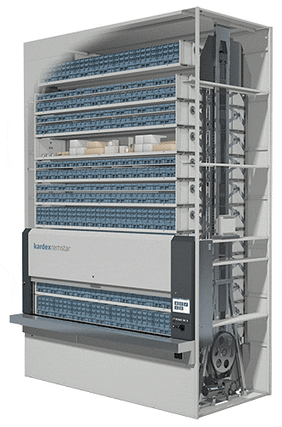
The hit-or-miss nature of traditional tracking and tracing in the supply chain can be costly to manufacturers. Contamination, damaged products, inventory discrepancies, and unfulfilled orders are just some of the things resulting from human error and inadequate procedural controls.
It’s all but impossible for busy managers and supervisors to ensure every worker is doing their job correctly, not cutting corners, or doctoring numbers to hide mistakes. However, even the most devoted employees will mess up occasionally. So, to minimize the human factor, more and more businesses are turning to supply chain automation to ensure process controls are followed exactly.
Supply Chain Automation Enhances Process Controls
 Once you have programmed a procedural control into an automated system, the system will follow it consistently when it performs the process. There will be no mistakes or thoughts of taking a shortcut if it’s in a hurry. Not only are the chances of embarrassing and costly mistakes reduced, but labor costs go down, too.
Once you have programmed a procedural control into an automated system, the system will follow it consistently when it performs the process. There will be no mistakes or thoughts of taking a shortcut if it’s in a hurry. Not only are the chances of embarrassing and costly mistakes reduced, but labor costs go down, too.
In manufacturing facilities and warehouses, the automation is in Automated Storage and Retrieval Systems (ASRS). These systems come in various forms, including vertical lift modules, vertical buffer modules, and vertical carousels. Each of them automatically retrieves items with a single operator standing by to receive them.
The benefits of this type of automation are clear. An ASRS can operate around the clock without needing rest or overtime. Pairing the ASRS with integrated inventory management software ensures both tracking and tracing quickly and efficiently.
Tracking and Tracing in Inventory Control
The terms “tracking” and “tracing” might sound as if they mean the same thing. However, they have distinctly different meanings.
When companies refer to tracking inventory, they have records that follow an item’s movement from the time they receive it until they ship it, maintaining those records for a designated period in case there are future issues related to it.
For example, the pharmaceutical industry is closely regulated, and the Drug Supply Chain Security Act (DSCSA) requires pharmaceutical tracking across various supply chains to avoid theft, fraud, and counterfeiting. Proper tracking can also identify and remove points in the supply chain where a product could be rerouted. Today, many pharmaceutical companies are employing a combination of supply chain automation, scannable barcodes, and Radio Frequency Identification (RFID) tracking.
The primary advantage of barcodes is their ability to be encoded with as much information as the shipper feels needed. At the same time, RFID trackers can be read remotely without precisely lining up a scanner.
Tracing Individual Workers
On the other hand, inventory traceability pertains specifically to operator performance. For instance, finding out which employee accessed an item from inventory or a part from the tool crib. This accountability is possible because authorized operators must log in using a traceable name and password or scan an ID badge. Because of this, workers wanting to keep track of tools or consumables needed to work on equipment can quickly trace those items back to the last individual to use them.
Our Automated Storage and Retrieval Solutions can Meet Your Tracking and Tracing Needs
Make Kardex Storage Systems your strategic partner in meeting your tracking and tracing objectives. One or more of our solutions can also help you save floor space, increase productivity, and become better organized. Contact us to discover how!

